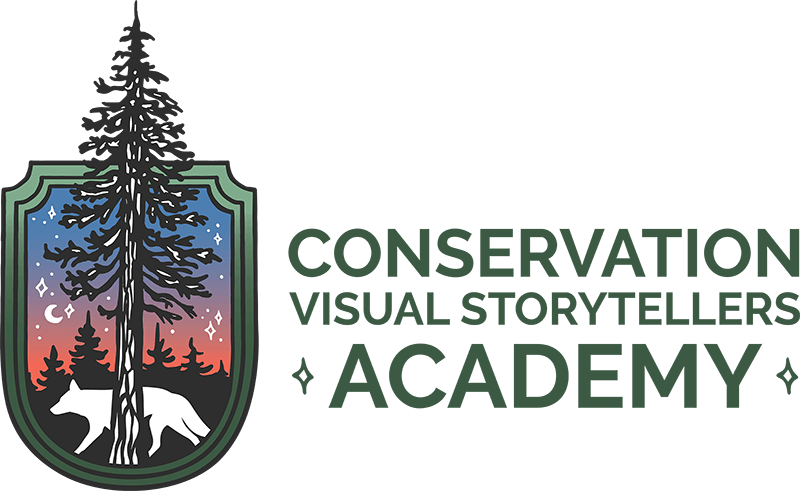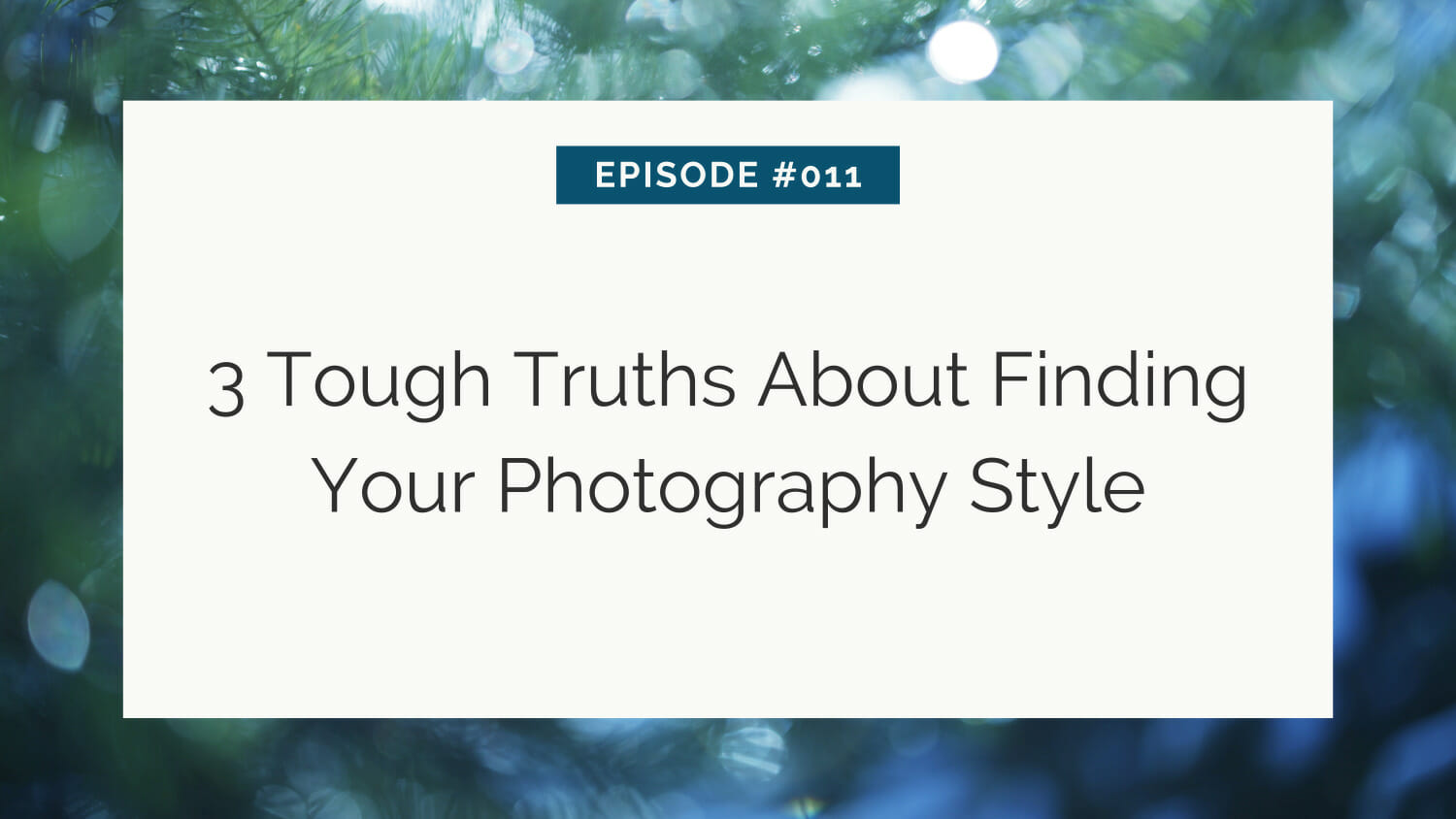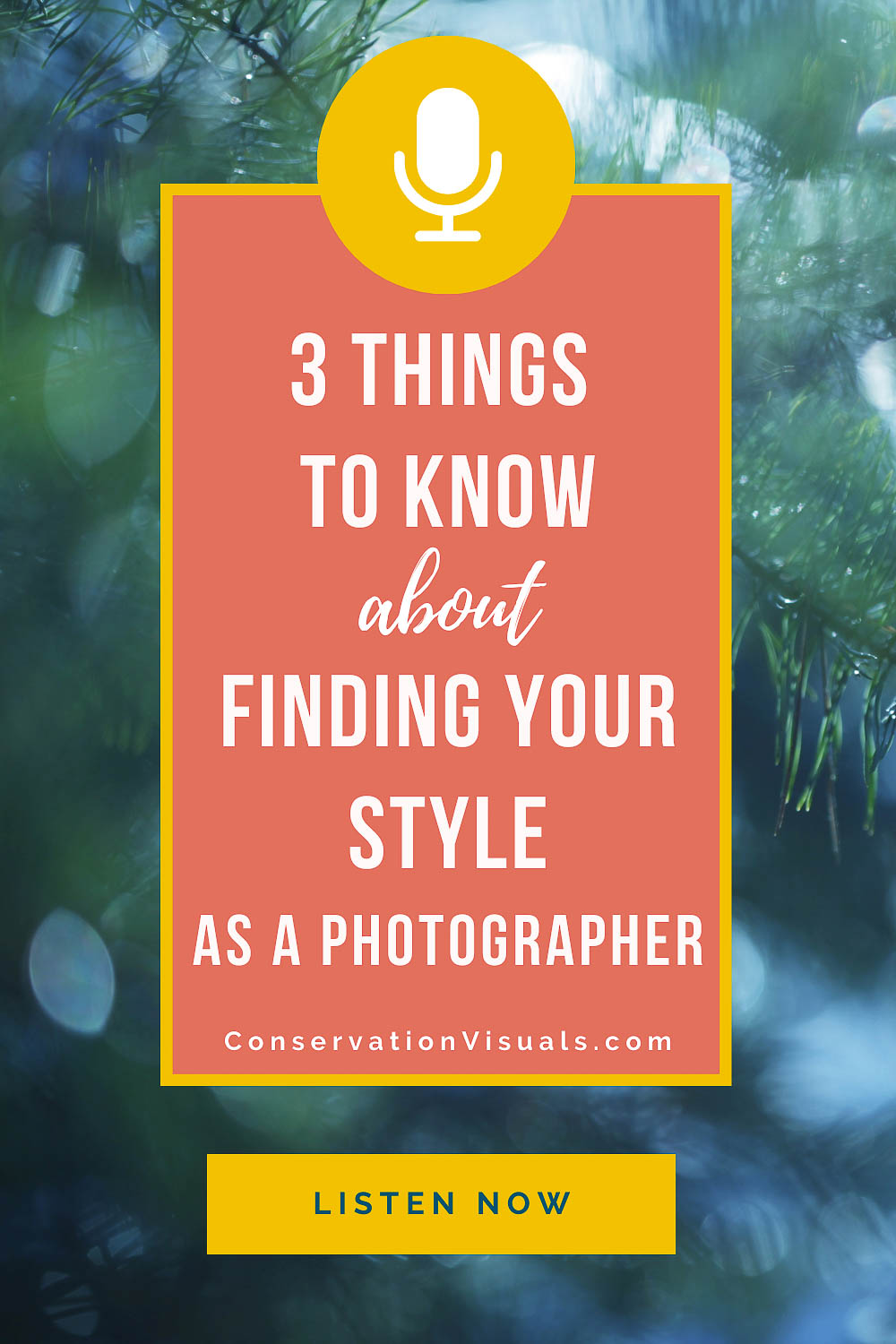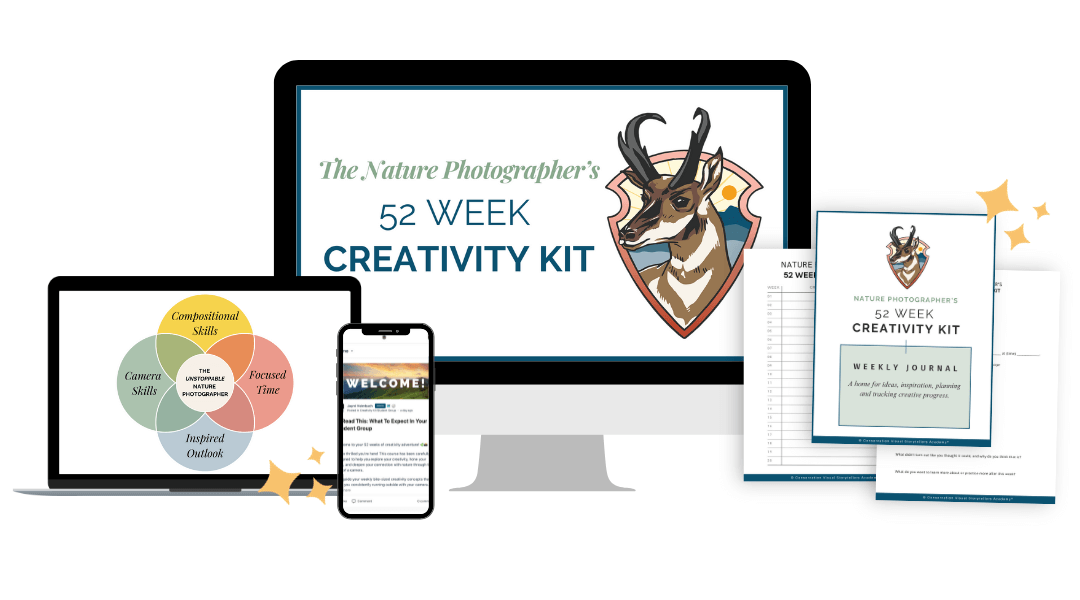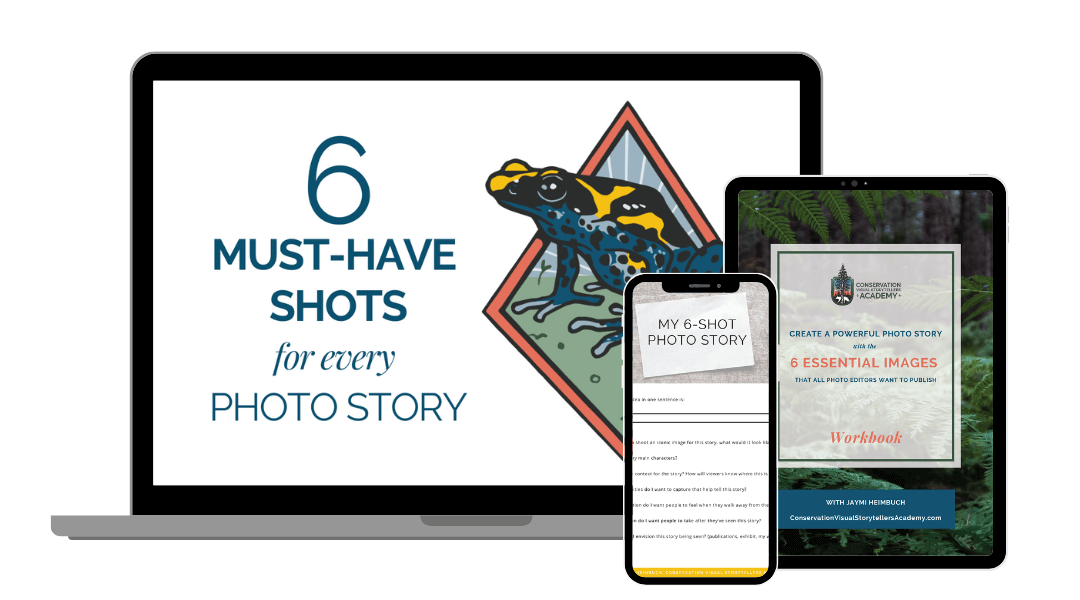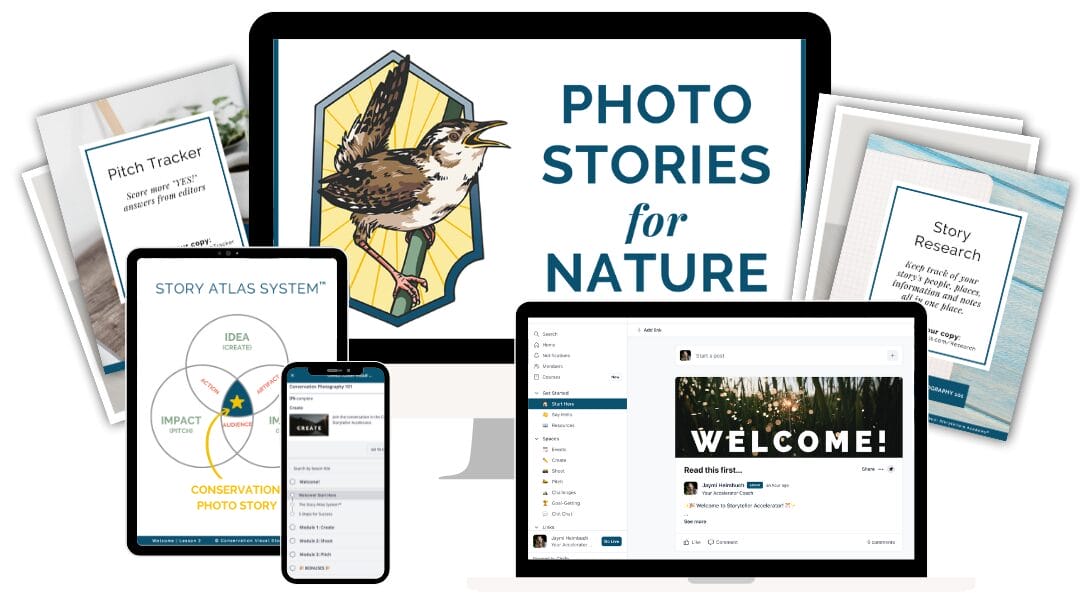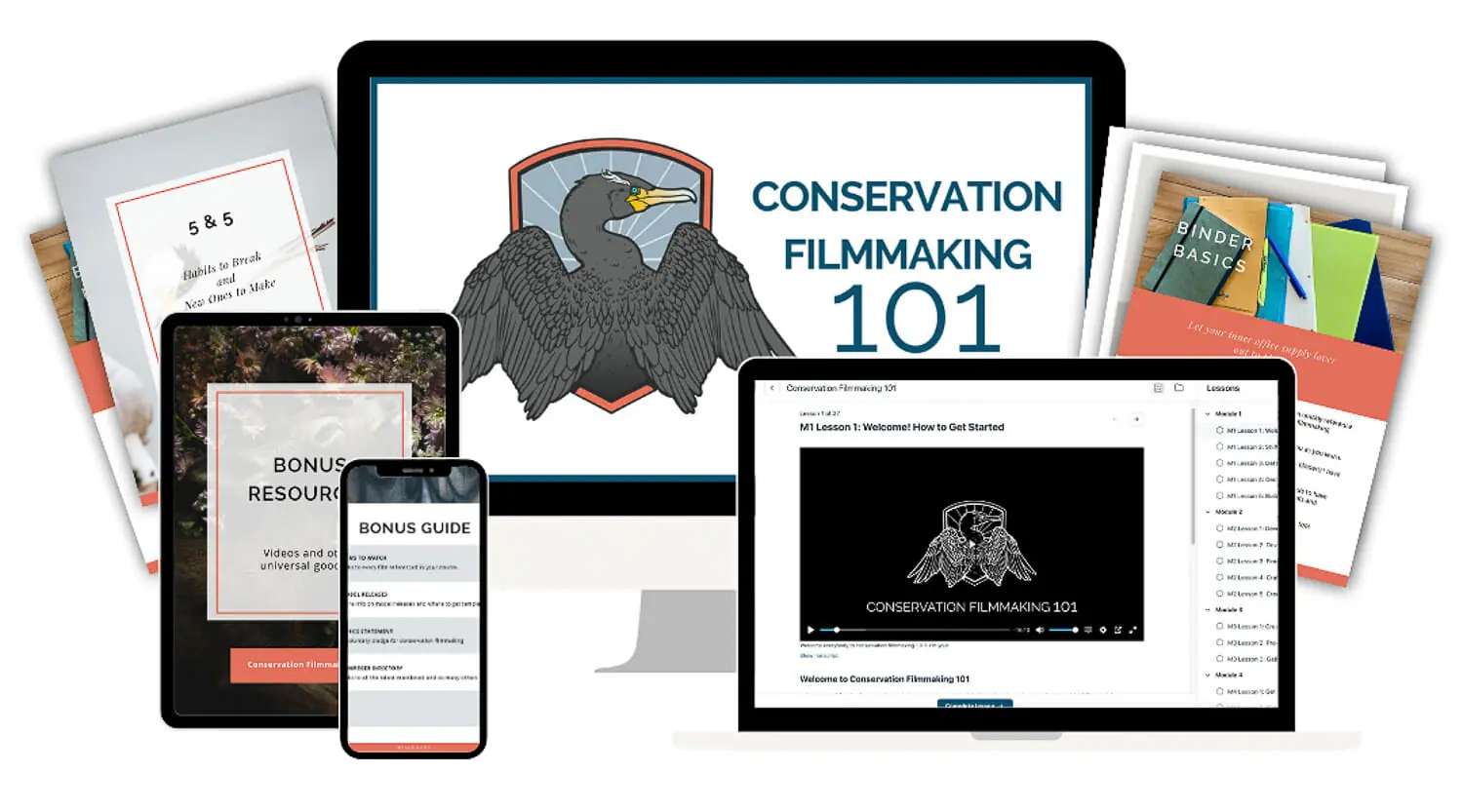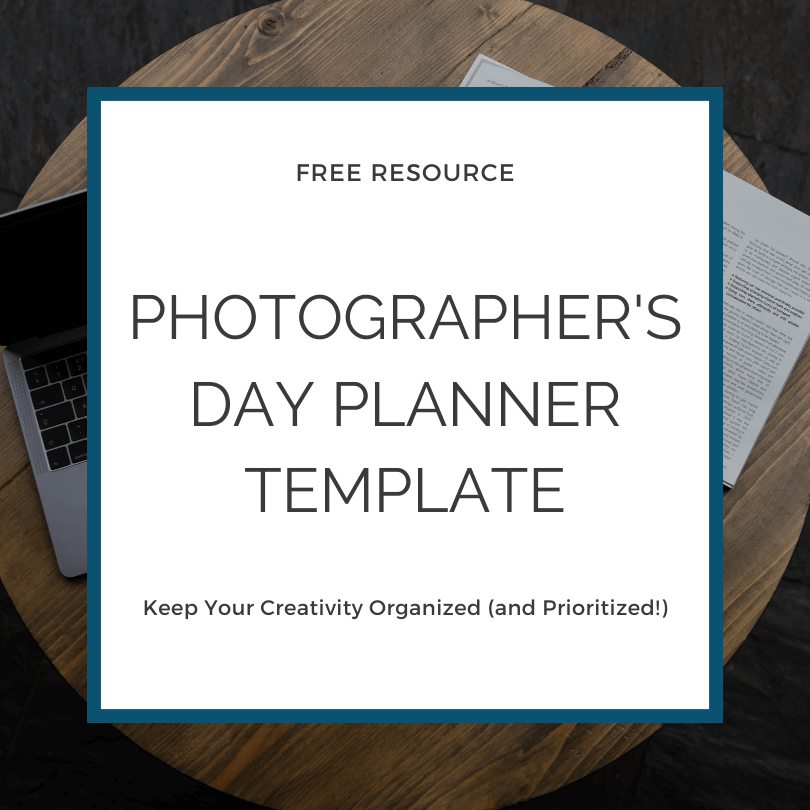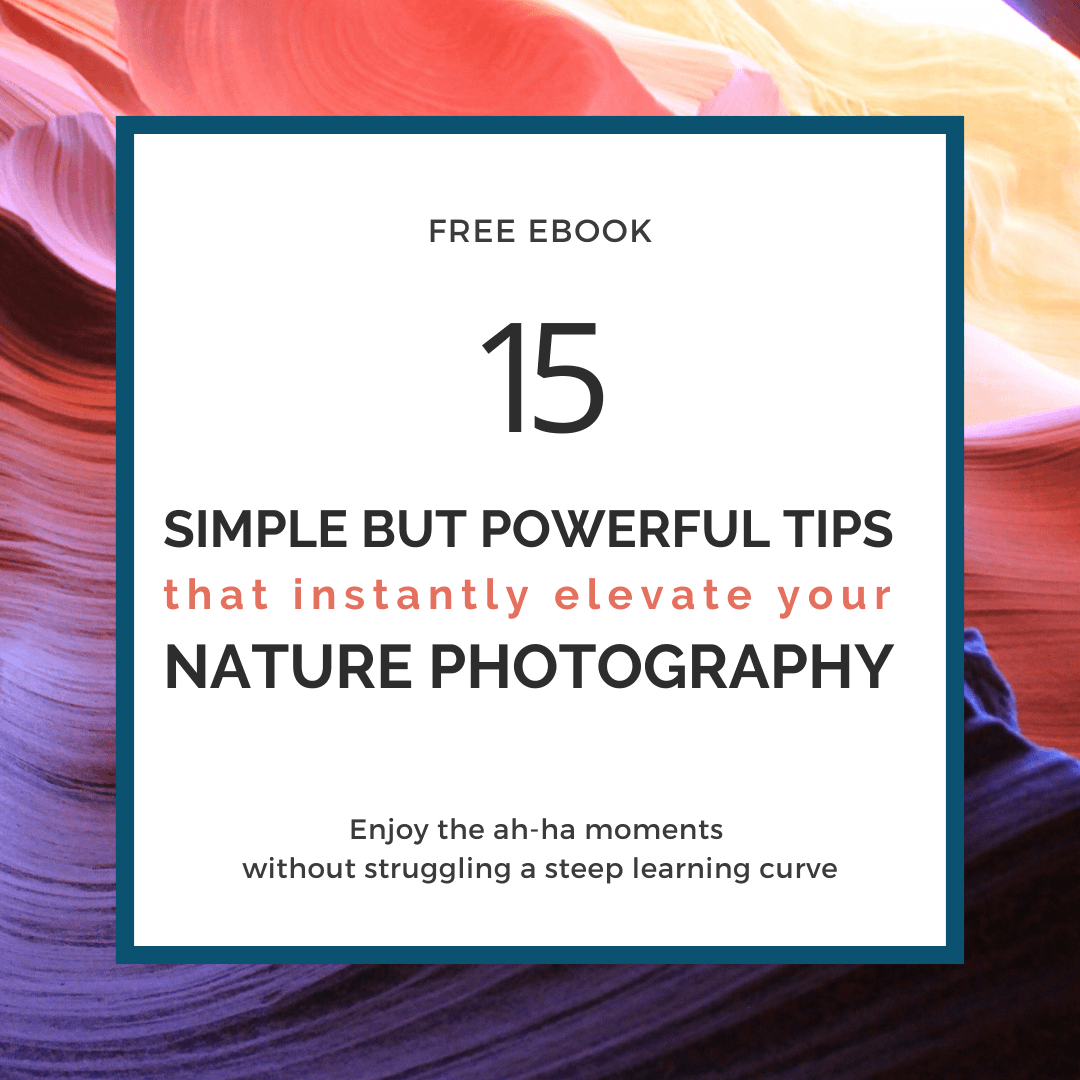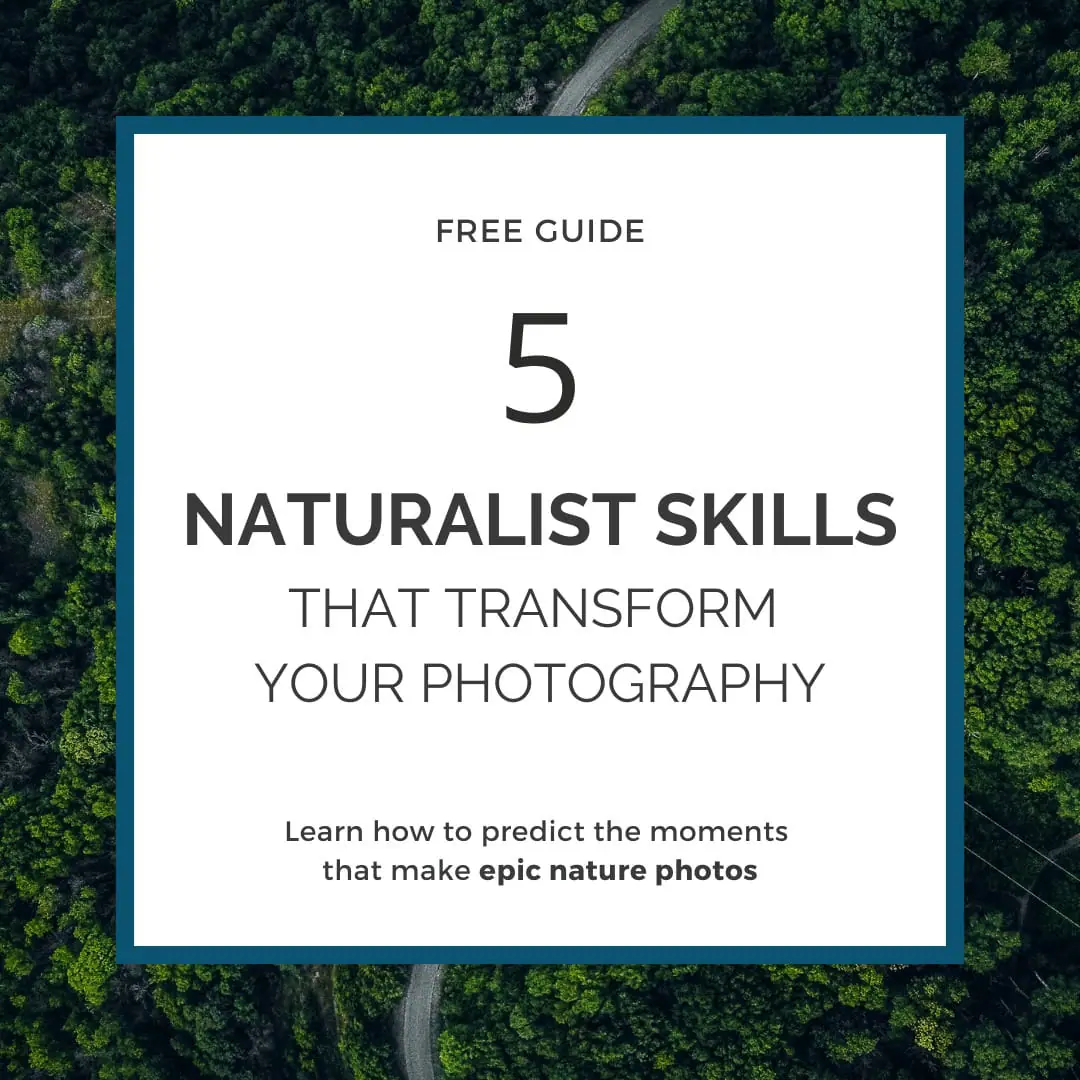3 Tough Truths About Finding Your Photography Style
Finding and nurturing your personal photography style ends up being a huge asset both in standing out from the crowd, and in preserving your creative sanity. But it isn't always an easy process to get there.
Here are the three truths I discovered about what it takes to find your own style in conservation photography.
Letting your photography style surface
After coming home from a shoot, I uploaded my photos into Lightroom and started sorting through them. When the photo above popped up, I felt a brief wave across my brain and a quick squeeze in my stomach that comes when I see an image I've made and just know: this is exactly right.
It wasn't some epic shot I'd been trying over and over to get, nor was it necessarily because of a purposeful composition or subject. Frankly, it was an unexpected moment caught in a few seconds as a wild urban coyote moved through the brush. But I got that rush of excitement at seeing the image because something I had been working on for awhile finally showed up.
Invisibly, but certainly there, is me.
There are some photographers whose work you immediately recognize because they have a certain style, a certain approach to the scene or subject. Maybe it's the mood, or the angle, the light they prefer or the depth of field.
Whatever it is there's a something that makes you look and say, “Oh, I know who took that.” Or at least, “This reminds me of [photographer]'s work.”
Nick Brandt's elephants, Ian McAllister's wolves, Morgan Heim's cormorants … there are photographers who show their subjects in a way that you see the subject, but also recognize the photographer in how the subject is shown.
It is a certain something that sets their work apart, that makes it identifiable.
It's like recognizing someone's voice as soon as they say, “Hello” on the phone.
You recognize the pitch, the accent, the way they stress certain syllables – you don't need them to announce their name to know who is on the other end of the line.
I had been wondering for years when I would find my voice in photography. It was an evolution I knew would happen if I just let it roll forward on its own.
I have waited a long time for it to appear, and during that time I've learned three difficult truths about the process, or really the waiting, behind finding one's own style.
I battled my own photography style for awhile…
Not in finding it, but in accepting it. I know it sounds strange. After all, isn't “finding your style” what every photographer aspires to? Actually, no. Especially. when you question if your style is what will earn you a paycheck. You question: Am I shooting the way editors want? The way clients want?
It's a difficult thing to find your style AND to find confidence within your style.
Along with countless other photographers, I went through this roller coaster. But eventually, I let my personal photographic. style surface, and after awhile I embraced it and appreciated it.
And ultimately, this is the secret not just to success, but in happiness and fulfillment as a conservation photographer.
Your identity as a unique photographer, with a distinctive style…
That is powerful as a professional.
Ultimately, when you develop your unique style, then you can be sought out for gigs because of that style.
You’re known for something.
You are now one of those photographers whose work is recognized at a glance because it’s so very you.
Pretty amazing, right?
1. You don't find your photography style. Your style finds you
There are dozens of articles on the web about finding your style in a certain number of steps. The claim is that by following their five steps, or seven steps or ten steps, your style will suddenly emerge.
It's true you can do a few things to help move the process along, like study the work of other photographers with whose style you feel a kinship, or give yourself assignments to push your creativity or editing process.
While these strategies will help your photography in many ways, a genuine style is something that cannot be decided on and then pursued.
That would be the same as deciding what personality you want to have and then acting only in that way. A nice idea (and something so many self-help books promote) but not realistic.
You are who you are, and your style is an extension of that.
It's not something anyone can force, or else the forcing is made apparent in a photograph that just doesn't sit quite right with viewers. There's a something that isn't there, or is too much there.
You just know when someone tries too hard. It has to come forward on its own.
For the last few years, I've simply kept a set of emotions and thoughts in my head as I shoot — a nebulous, shapeless notion of what I like, of who I am, of what I think on an instinctual level about a scene. I've tried to bring that out in the images I take, and in the images I select for editing.
Eventually, those decisions added up into something that has become more and more apparent, like a mist slowly thinning until you can finally make out the scene beyond.
2. Your photography style is crafted with intuition
Ask any expert and they will tell you that to make great photographs, you need to know your subject well.
Knowing your subject provides you a connection with them, allows you to predict behavior or movements which leads to capturing “the decisive moment.”
When you know your subject well, you have a fluidity of feeling and thought.
You shoot with your heart as much as your head. There is an intuition to knowing how to compose a scene, when to click your shutter.
And really, you can really only find this level of connection when you shoot what you love.
For some, that is families or weddings, for others it is pets or wildlife, while others connect most deeply with adventure or travel or landscapes.
Whatever it is, you have to find out what you most love to shoot before you can find out what your style actually is.
For me, the key factor in helping my style finally appear was my dog. I know how cliché this may sound but, let's face it, many photographers get their beginning in photographing their own children, or their own creations in the kitchen, or their own travels or yes, their own pets.
In the first year or two of starting in photography, I struggled in finding subject matter with which I really connected.
I began with street photography since opportunities were everywhere, but never felt comfortable photographing strangers. Sports photography had a certain appeal because I love tracking fast movement and capturing a critical moment, but I don’t have a connection with sports themselves. I have always had a profound connection to the natural world, and I finally knew that wildlife photography was where I was headed.
But even then, for the first couple years I was taking descent photos but not photos that said something, not photos where I looked at them and got that squeeze in my stomach.
My photos were the result of a certain fledgling skill set and a situation, but they lacked soul.
Then I got my dog.
There is such a quiet comfort in our hikes and beach runs together, such an intimacy of spirit that it makes it easy to create images in the way I want to create them.
I know my dog like I know myself. I know what each little flinch of muscle means, I know what he's going to do before he does it because I can see him planning a move as he plans it.
It was through this connection with him that I finally started to truly connect with my photography.
My subject wasn’t going anywhere, I wasn’t worried about a wild animal taking off, about missing my one and only chance with a species. I could play.
Importantly, it was at the same time that I adopted him and was working on book. I realized that canids have my heart and soul.
And when I realized that, I knew it wasn't long before I would start to see my style click into place — quietly, tenuously, it would arrive if I was patient and mindful.
With enough time photographing my own dog, photographing rescue dogs, and photographing wild coyotes and other canid species, I started to see my style appear in the same way as an image appears on a sheet of paper floating in a bath of developer.
But this was when the third lesson became apparent.
3. If you can’t translate your style into every subject you shoot, then you haven’t really found it (yet)
One bit of advice from experts is to study the photography of the greats. Learn how they crafted iconic photographs and with that knowledge, go shoot.
But there is a difference between copying and creating, and it takes knowing your own style in order to create.
You can study the masters, but you’ll only find your style through study if you can identify exactly what about their photos speak to you.
Recognizing that you connect with the photos is step one.
Step two is zeroing in on exactly why.
When you know why, you can question if that aspect of their style is actually part of your style, or if it is simply something you appreciate as a viewer.
So if you want to study the masters, you need to know that you’ll only find the smallest fragments of scattered somethings, that you then have to recognize in yourself in order to adopt, or rather, to nurture.
If some approach to composition, or some relationship to light, or some preference for expression isn’t in you already, it’ll probably never be part of you.
So resolve to appreciate that in other images but continue the search for your own ideals.
This is important because when you copy a style, it's difficult to translate it to everything you shoot.
It is something you have to be highly conscious of in order to pull off because it doesn't come naturally. But if you discover yourself, you can translate that into anything you shoot, because all you're doing is being you.
Some beginners think they can rely on a certain preset or filter in post processing to give their images a unique look. But this is jamming a square peg into a round hole.
You can’t force your photos through a filter and pretend you’ve created a style.
The only thing people will recognize of you in your photos is that you have a penchant for a certain filter and relentlessly process your photos this way. But are you reflected in the photos? Possibly, but probably (hopefully) not.
When I first picked up photography, I thought that I didn't want to develop a style because I wanted to be able to shoot anything in any way. I was actually mistaking a lack of skill for perceived flexibility.
Because I hadn't yet gathered a skill set solid enough to shoot in a specific style when I wanted and shift out of it into something else whenever I needed, I thought that meant I would be fettered if I did indeed settle into a style.
I eventually learned that in finding my style I am not ruling out possibility, I am polishing my identity.
The reality is that once you find your own style and have a hefty set of skills to pull from, you can shift in and out of certain looks whenever the moment calls for it.
You can shoot one way for a commercial client but come back into your own when working on a photo project. It becomes as easy as wearing a fancy dress for a cocktail party, then slipping back into my usual jeans and a t-shirt when I get home.
What a thrilling thing it is to know that you can stretch out of your comfort zone and come back to yourself whenever you want.
How much the possibilities for your photography expand once you know who you are! You can not only shoot in whatever way is needed, but you can also bring a touch of your signature style into it as well.
When you find your style, you will find yourself looking at any image you take and saying, “I know you.”
And you will be speaking both about the subject and about you.
Resources Mentioned
Episode 011: 3 Tough Truths About Finding Your Photography Style
Shownotes: ConservationVisuals.com/11
(Digitally transcribed, please forgive any typos)
________________
Jaymi Heimbuch:
Every week I do these live Q and A sessions for my students who are inside my conservation photography 101 digital course. And recently a student mentioned how they were struggling a bit about how they usually approached photography and their style. And how it feels like that doesn't align with the photo journalistic approach that seems to be expected of conservation visual storytellers. She has this more kind of fine art approach to her work. And so she was struggling with figuring out the balance between her style and how she really comes at her photography and how she thought she was supposed to be photographing in order to be successful.
And that sparked the memory of a similar struggle that I had in finding my style and in really letting it emerge. I battled my own style for a while, feeling like I should be shooting more like these other styles that I see so often in magazines. This kind of dramatic photo, journalistic, very punchy images, I thought. I'm not going to get the jobs that I want if I don't shoot the right way, but eventually I let my personal style come through it was kind of undeniable. And ultimately, finding and nurturing your own personal style ends up being a huge asset both in standing out from the crowd. Because why do you want to look like everyone else and in preserving your creative sanity? Because your style is gonna emerge.
So in this episode, I'm gonna talk a little bit about that that journey of mine and that struggle. And I'm also gonna talk about the three truths that I discovered about what it takes to find your own personal style and to Own it.
Welcome to impact the conservation photography podcast. I'm your host, Jaymi Heimbuch. And if you are a visual storyteller with a love for all things wild, then you're in the right place, from conservation to creativity, from business to marketing and everything in between. This podcast is for you, conservation visual storyteller who is ready to make an impact. Let's dive in
So to get started on this conversation, I'd like to rewind a little bit. Years ago, after coming home from a shoot, I uploaded my photos and a light room and I started sorting through them and this certain photo of a coyote popped up. And when it did, I felt this kind of wave go across my brain and this quick squeeze in my stomach that comes when I see an image that I've made. And I just know, Yeah, this this one is exactly right. This is me. Now I'm gonna include that photo in the show notes if you want to see it.
But this was not some epic shot that I've been trying for over and over. It wasn't something that I had really strategized to get. It wasn't necessarily because of this purposeful composition or even the subject. Frankly, it was a very unexpected moment, caught in a few seconds as a wild urban coyote moved through the underbrush. But I got that rush of excitement at seeing the image because something that I had been working on for a while finally showed up in it in that moment, invisibly but very much there. I'm in that photo.
There's some photographers whose work that you immediately recognize because they have a certain style. They have a certain approach to a scene or a subject. Maybe it's the mood or angles that they love to get or light that they preferred up the field or whatever it is. There's something that makes you look and you say, Oh, I know who took that, or at least that you think this reminds me of so and so's work for me. Ian McAllister's Wolves, Brian Skerry's Marine Life, Cristina Mittermeier's Portraits of indigenous people like these are people were When I see their images, I'm like, Oh, I know exactly who that is And they are photographers who show their subjects in a way where you see the subject, but you also recognize the photographer and how the subject is shown. It's a certain something that sets their work apart and makes it identifiable.
It's sort of like recognizing someone's voice as soon as they say hello. On the phone, you recognize the pitch, the accent, the tamber, the way they stress certain syllables that you do not need them to announce their name for you to know exactly who is on the other end of the line. Now, I had been wondering for years when I was gonna find my voice and photography. It was an evolution that I knew would happen if I just let it roll forward on its own. I had waited a long time for it to appear, and during that time there were three kind of difficult truths that I learned about the process or really the waiting behind finding your own style. And that's what I really want to dive into.
The first tough truth that I learned is you don't find your style. Your style finds you. Now There are dozens of articles on the Web about finding your style in a certain number of steps. If you follow these five stubs for these seven steps of these 10 steps or whatever, your style will suddenly emerge. And, yeah, it's true. You can do a few things to help you move Progress along like you can study the work of other photographers who style you feel a kinship with. Or you can give yourself assignments to push your creativity or two. Push your skills inside of an editing process. And while these strategies will help your photography in a lot of ways, a genuine style is something that cannot be decided upon and then pursued I mean, that's the same is deciding that you want a certain personality and therefore you only act in that one way. It's a nice idea. And, yeah, there's self help books out there that also promote that concept. But it's not realistic. You are who you are, and your style as a photographer is an extension of that. It's not something that anyone can force, or else that forcing looks pretty apparent. Something just doesn't sit quite right in your images. There's something that isn't there or it's too much there, you know, you just know when someone tries too hard, it has to come forward on its own.
And for several years, as I was getting started, I would keep a set of emotions and some thoughts inside my head as I would shoot. And it's this kind of nebulous, shapeless notion of what I like and who I am or what I think on a next instinctual level about a scene. And I tried to bring that out in the images that I would take and in the images that I select for editing and eventually those decisions added up into something that became more and more apparent. So from this nebulous kind of like well, I know that I like to kind of go this route and then allowing myself to go that route. Then, after years of that, back of the brain thinking while I was shooting, I finally realized the natural preferences that all added up to my style. Eventually my style found me. There wasn't a way to force it to appear. It had to evolve on its own terms, and finally I had to recognize it for what it was. There was all that kind of in the back of my head just thinking about the things that I like and then on a very intuitive level, on a very subconscious level, letting it come forth.
Now I mentioned that I wasn't exactly happy about this when I realized my style. So my style is a very shallow DUP. The field I love using natural cover like leaves and branches and stuff as bokeh. I love capturing contemplate of moments for a wild animal. I like using back lighting that tends to have a very a motive, kind of ethereal. Look, you know, all this added up to something that I thought was too emotional to ethereal. It was too weak for conservation. Photography work. I thought magazines wanted grit and action, right? Well, yes and no. And it took more years of trying to force myself into what I thought was that correct style of shooting that grit in that action and then having my own style pop up again and again and again in everything that I shot before I was finally like Well, this is my style. And then finally, after some more work, I accepted it. And then I fell in love with it, and I found comfort in it and eventually on appreciation for it. And now I really own my style.
And this is where the second tough truth comes in. The second tough truth that I discovered is your style is crafted with intuition. So, yes, for a while I was trying to force myself to shoot in a certain way. But my real style just kept coming up, And that's because style is ultimately intuitive. Ask nearly any pro photographer how to become great at this job, and they're gonna tell you that to make great photos, you need to know your subject well. knowing your subject provides you a connection with um, it allows you to predict behavior or movements that are gonna lead to capturing that decisive moment in a shot. When you know your subject really well, you have a fluidity of feeling and thought You shoot with your heart as much as your head. And there is intuition to knowing how to compose a scene when to click your shutter. And that is where your style lives.
And really, you can only find this level of connection with your subject when you shoot what you love. For some, that's families or weddings, and for others, it's pets or wildlife, and others connect mostly deeply with adventure or travel or landscapes, and whatever it is. More often than not, you're gonna need to find out what you most love to shoot before you can find out what your style actually is. Because when you shoot what you love, you shoot with intuition, and when you shoot with intuition, your style has room to appear. So for me, the key factor in helping my style finally appear Was my dog. I know this sounds really cliche, but let's face it a lot of photographers get their beginning in photographing their own kids or, you know, the stuff they cook in the kitchen or their own pets. And that was me.
So in the first year, two of starting photography, I really struggled in finding subject matter that I connected with. So I started out with street photography because I was living in San Francisco and there were opportunities everywhere. I could just take my camera out with me, and there's opportunities for Cool Street photography. But I never felt comfortable with that. I never felt comfortable photographing strangers. It was interesting to me creatively, but it just didn't sit right in me. It's not how I like to approach photography and sports Photography had a certain appeal because I love tracking fast movement. I love capturing these critical, surprising moments in that movement, but I don't have a connection with sports themselves. I don't care about sports. I don't love them. It was kind of a square peg in a round hole situation. Now I've always had a profound connection to the natural world, and I finally knew that wildlife was where I was headed. But even then, for the first couple of years, you know, I was taking okay photos, but not photos that said something, not photos where I looked at them and I got that squeezing my stomach. My photos were the result of some fledgling skills and a situation, but they really lacked soul. And then I got my dog.
So my dog is a border collie heeler mix. He's really active. He had to be exercised multiple times a day, every day. And so I got into taking him out on a lot of hikes and taking him out for sunrise runs on the beach. And there's such a quiet comfort in our hikes and our beach runs together. There was such an intimacy of spirit that it made it really easy to create images in the way that I kind of wanted to create them. I know my dog like I know myself. I know what each little flinch of muscle means. I know what he's gonna do before he does it, because I can see him planning a move as he makes it. And it was through that connection with him that I finally started to really build a connection with my photography. My subject wasn't going anywhere. I wasn't worried about a wild animal taking off about missing my one and only chance with a species. I was free to really play with my photography. And importantly, it was at the same time that I adopted him that I was also working on the Ethiopian wolf book, and I realized that canids completely have my heart and soul. canids are amazing to me. I'm completely fascinated by them and all the different species worldwide. I think that they're phenomenal. And when I realized how connected I was to canids, I knew that it wasn't before long that I would start to see my style click into place. And sure enough, it was going to arrive if I was really patient and really mindful.
So with enough time photographing my own dog and photographing rescue dogs with this organization called Heart Speak and photographing coyotes and other canine species, I finally started to see my own style appear in the same way that an image appears on a sheet of paper that's floating in a bath of developer. And if you are old enough to be shooting film or you're lucky enough to be shooting film and you are in a dark room. You know exactly what I mean when that image just suddenly appears. But this was also when the third tough truth became apparent.
And the third tough truth is, if you can't translate your style into every subject you shoot, then you haven't really found your style yet. So if you go back to those pros, you asked earlier about becoming great and then you ask them the question again, they're probably going to give you a second piece of advice, which is to study the photography of the greats, learn how they crafted these iconic photographs and then with that knowledge, go shoot. But there's a difference between copying and creating, and it takes knowing your own style in order to create. You can study the masters and you can go copy what they dio. But you're only gonna find your style through this kind of studying. If you can identify exactly what a about their photographs speaks to you. And recognizing that you connect with the photos is step one, then step two is zeroing in on why.
So when you know why, then you can question if that aspect of their style is actually part of your style or if it's simply something that you appreciate in them as a viewer. So if you want to study the Masters, then you need to know that you're only gonna find tiny little fragments of scattered some things. And then you have to recognize in yourself in order to adopt or to nurture those little somethings. So if someone's approached a composition or some relationship toe light or some preference for expression isn't in you already, it's probably not going to be part of you, so resolved to appreciate that in other images, but continue to search for your own ideals. And this is important because when you copy a style, it's really difficult to translate it into everything you shoot so you can say yes, I'm going to study the greats. I'm gonna shoot the way they shoot. I'm gonna copy it because I feel like that's me. But if you can't translate that into everything you shoot, it's not genuinely your style. You haven't found it quite yet. It's something that you have to be highly conscious of in order to pull off because it doesn't come naturally, If you discover yourself, however, you can translate that into anything. You shoot because all you're doing is being you.
When I first picked up photography, I thought, I don't want to develop a style because I want to be able to shoot anything in any way that's needed. I thought, Oh, if I only find one style than I'm feathering myself, I'm limiting myself and I want to be capable of shooting anything. But I was mistaking perceived flexibility for what was actually lack of skill, because style and skill are different things. And the more skill that you have, the more you can use your style for different purposes. See, I thought, if I come to only one style than if I need to go into a situation and photograph it a certain way, I'm not gonna be able to. But the reality is, if I'm actually a high level photographer, of course, I can exit my own style or adjust. It went absolutely necessary because I have the skills that I need for any situation. But see, here's the thing. Most of the time you don't need to do that, and I didn't know that then I eventually learned that in finding my style, I'm not ruling out possibility. I'm not limiting my potential for anything. Actually, I'm polishing my identity and your identity as a unique photographer with a distinctive style that is powerful as a professional. If you have skills, you can copy any style when needed. And if a gig calls for that, then fine. But ultimately, when you develop your unique style than you are sought out four gigs because of that style, you're known for something. You're now one of those photographers whose work is recognized at a glance because it's so you now that is pretty amazing.
So once you find your own style and you have a hefty set of skills to pull from, you can shift in and out of certain looks. Whenever the moment calls for it. You can shoot one way for a commercial client, but then come back into your own. When working on a photo project, it becomes as easy as you know. Wearing a fancy dress to a cocktail party and then coming home and slipping back into jeans and a T shirt and was thrilling is to know that you can stretch out of your comfort zone and come back to yourself whenever you want. How much the possibilities for your photography expand once you know who you are?
Now I know that I am not the only photographer who has struggled in trying to figure out style in pushing to force a certain style to emerge and then finally recognizing it and allowing it to be there. And I also know that I am not the only photographer who watched my style develop and maybe pushed back against it or worried about how that style was gonna fit into the field that I wanted to work in. I wanted to work in conservation photography as an assignment photographer, and yet here I was, looking through these magazines and not seeing myself in them and not seeing how I shoot. I'm seeing the way that other people shoot and you know this style that I thought was desired by editors. But after a while, when I started to really look around when I started to read way more magazines and go through way more online publications and look through way more photo essays by all different kinds of photographers, I realized then that there is no such thing as only one right way to shoot. As a professional photographer, there is your way to shoot, and you will find the publications who want that who match that, who appreciate that and who seek you out for your style.
There is nothing wrong at all with your style as it emerges and solidifies, and there's also nothing wrong with your style as it changes over time. It's just you in your images, as as long as you recognize it and you allow it to be there and you use it to your best strengths, and you allow it to make what you do identifiable as you. Then you're on the right path and you will 100% be prosperous.
Now I invite you to check out the show notes, because I'm including images from that time in my development in my style, and you'll see how it started with my dog and eventually translated into everything that I shoot today, whether it's portrait's of wild animals or researchers in the field. I wanted you to use them as inspiration, and I would love to find out more about you and support you in your style. So I have a free Facebook group. It's called conservation Photographers, a community for creativity and support. And I invite you to come into the Facebook group and post an image that you feel reflects your style where you're at right now and just let us know like, yeah, I listen to this podcast episode. This is my shot. This is my style. This is where it's at. Let us know what you think about it, and we all want to be able to support you and cheer you on and toe help you out in your journey as a photographer. So even if you've been doing this for a long time, even if you're just starting out, this would be so much fun to be able to see you inside the group and to know more about you and how you shoot and your approach to your work so you can find that link to conservation photographers. Facebook group in the show notes. And meanwhile, I hope to see you in there, and I can't wait to talk to you again next week
Before we wrap up. I would love to ask you to do one quick thing subscribe to this podcast as a subscriber, you'll not only know when each week's episode of those lives, but you'll also get insider goodies like bonus episodes. You might miss thumb unless you're subscribed and I don't want you to miss out on a thing. So he's tapped that subscribe button and I will talk to you next week.
________________
Impact: The Conservation Photography Podcast
JaymiHeimbuch.com/Podcast
